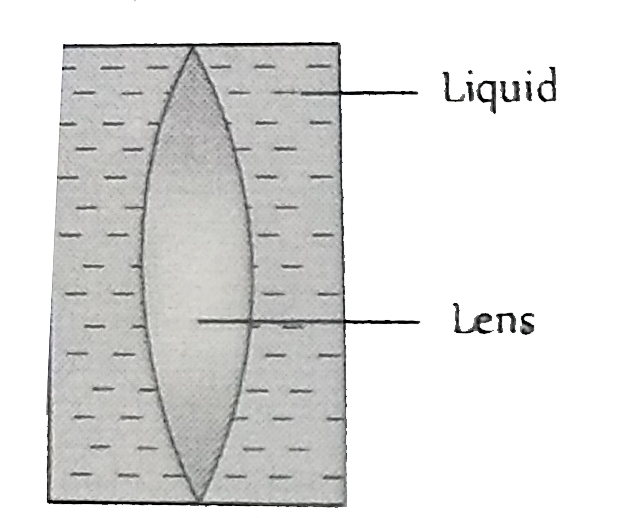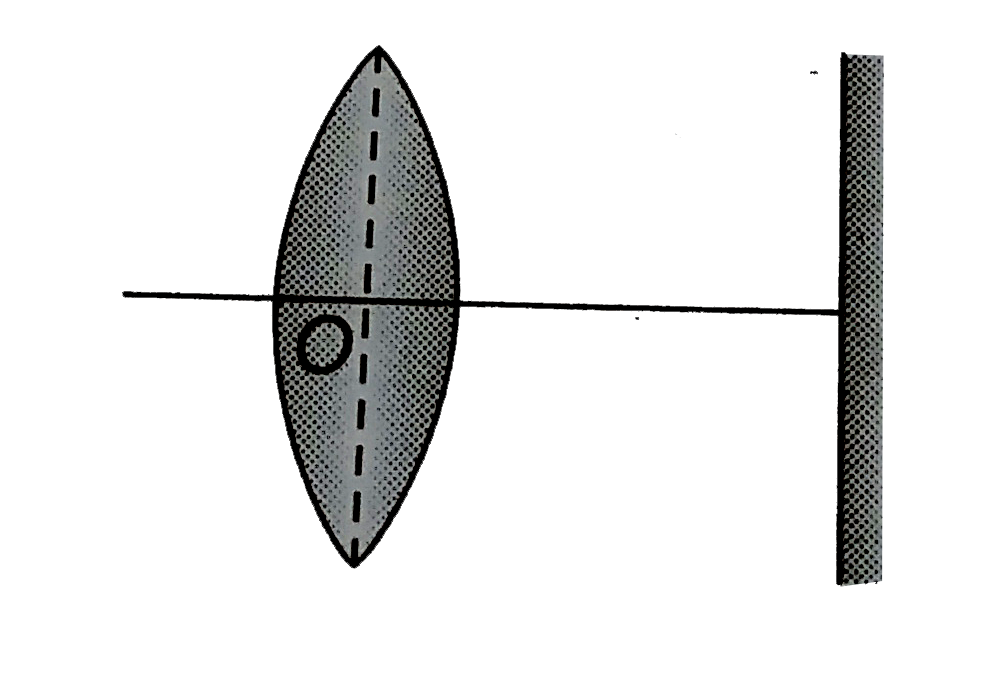Complete Solutions to DPP 1.4 of chapter RAY OPTICS of Class 12 book with complete answers and questions
| Class 12 | PHYSICS |
| Chapter | RAY OPTICS |
| CENGAGE PHYSICS DPP | DPP 1.4 |
| Number Of Questions | 15 |
| Academic Year | 2023-24 |
The graph shows how the magnification `m` produced by a convex thin lens varies with image distance `v`. What was the focal length of the used ?
 04:13View Solution
04:13View SolutionThe distance v of the real image formed by a convex lens is measured for various object distance u. A graph is poltted between v and u, which one of the following graphs is correct
View SolutionPoint object O is placed on the principal axis of a convex lens of focal length 20cm at a distance of 40 cm to the left of it. The diameter of the lens is 10cm to the right of the lens at a distance h below the principal axis, then the maximum value of h to see the image will be
01:37View SolutionA luminous object is placed at a distance of `30 cm` from the convex lens of focal length `20 cm`. On the other side of the lens, at what distance from the lens a convex mirror of radius of curvature `10 cm` be placed in order to have an upright image of the object coincident with it ?
02:56View SolutionShown in the figure here is a convergent lens placed inside a cell filled with a liquid. The lens has focal length `+ 20 cm` when in air and its material has refractive index 1.50. If the liquid has refractive index 1.60, the focal length of the system is
 03:18View Solution
03:18View SolutionTwo point light sources are 24 cm apart. Where should a convex lens of focal length 9 cm be put in between them from one source so that the images of both the sources are formed at the same place
05:08View Solution
The distance between a convex lens and a plane mirror is 10 cm. The parallel rays incident on the convex lens after reflection from the mirror forms image at the potical centre of the lens. Focal length of lens will be02:30View SolutionA small fish 0.4 m below the surface of a lake is viewed through a simple converging lens of focal length 3 m.the lens is kep at 0.2 m above the water surface such that the fish lies on the optical axis of the lens. Find the image of the fish seen by the observed. `(mu_(water)=(4)/(3))`
04:10View SolutionFigure given below shows a beam of light converging at point `P.` When a concave lens of focal length `16cm` is introduced in the path of the beam at a place `O` shown by dotted line such that `OP` becomes the axis of the lens, the beam converges at a distance `x` from the lens. The value `x` will be equal to
 04:03View Solution
04:03View SolutionThe object distance u, the image distance v and the magnification m in a lens follow certain linear relations.
View SolutionA biconvex thin lens is prepared from glass of refractive index `mu_(2)=(3)/(2)`. The two conducting surfaces have equal radii of 20 cm each. One of the the surface is silvered from outside to make it reflecting. It is placed in a medium of refractive index `mu_(1)=(5)/(3)`. It acts as a
View SolutionA convex lens of focal length 15 cm and concave mirror of focal length 30 cm are kept their optical axes PQ and RS parallel but separated in vertical direction by 0.6 m, as shown. The distance between the lens and mirror is 30 cm. An upright object AB of height 1.2 m is placed on the optic axic PQ of the lens at a distance of 20 cm from the lens.

Find the linear magnification of the first image after refraction from the lens.View SolutionA convex lens of focal length 15 cm and concave mirror of focal length 30 cm are kept their optical axes PQ and RS parallel but separated in vertical direction by 0.6 m, as shown. The distance between the lens and mirror is 30 cm. An upright object AB of height 1.2 m is placed on the optic axic PQ of the lens at a distance of 20 cm from the lens.

Find the linear magnification of the second image after reflection from the mirror.View SolutionA convex lens of focal length 15 cm and concave mirror of focal length 30 cm are kept their optical axes PQ and RS parallel but separated in vertical direction by 0.6 m, as shown. The distance between the lens and mirror is 30 cm. An upright object AB of height 1.2 m is placed on the optic axic PQ of the lens at a distance of 20 cm from the lens.

If A'B' is the final image formed, A' corresponding to A and B' corresponding to B, find the distance of B' below optics axis of lens.View SolutionA convex lens of focal length 15 cm and concave mirror of focal length 30 cm are kept their optical axes PQ and RS parallel but separated in vertical direction by 0.6 m, as shown. The distance between the lens and mirror is 30 cm. An upright object AB of height 1.2 m is placed on the optic axic PQ of the lens at a distance of 20 cm from the lens.

As in the lat problem, find the distance of A' below the optic axis of lens.View Solution
DPP 1.4 questions and complete solutions for chapter RAY OPTICS of CENGAGE PHYSICS (HINGLISH) of Class 12
